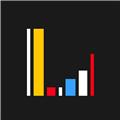Dividend Yield
measures the last recorded Cash Dividend (annualized) as a % of the current market price of the stock
Dividend Yield =Cash Dividend per Share/ Current Market Price per Share
指反映股票股息收益水平的指標,計算方法爲該公司的年度股息除以總市值,或每股股息除以每股市值,通常以百分比的形式表示。 eb
A financial ratio that shows how much a company pays out in dividends each year relative to its share price. In the absence of any capital gains, the dividend yield is the return on investment for a stock. Dividend yield is calculated as follows:Dividend yield is a way to measure how much cash flow you are getting for each dollar invested in an equity position - in other words, how much "bang for your buck" you are getting from dividends. Investors who require a minimum stream of cash flow from their investment portfolio can secure this cash flow by investing in stocks paying relatively high, stable dividend yields.
To better explain the concept, refer to this dividend yield example: If two companies both pay annual dividends of $1 per share, but ABC company's stock is trading at $20 while XYZ company's stock is trading at $40, then ABC has a dividend yield of 5% while XYZ is only yielding 2.5%. Thus, assuming all other factors are equivalent, an investor looking to supplement his or her income would likely prefer ABC's stock over that of XYZ.
熱門資訊更多
歐元兌美元失去動能,因歐洲央行降息押注堅定,上行空間仍然受限
05/02 17:55
福匯FXCM
黃金價格延續了盤中的穩定下跌,回落至接近2300美元大關
05/02 17:52
福匯FXCM
市場情緒改善,金價回落
05/02 17:29
福匯FXCM
市場情緒改善,歐元/日元走高至166.00 附近
05/02 17:25
福匯FXCM
今日銀價:根據FXStreet數據,銀價下跌
05/02 17:15
福匯FXCM
美元/新加坡元 當日內: 有上漲的可能,目標價位定在 1.3635 。
05/02 16:52
KVB昆侖國際






